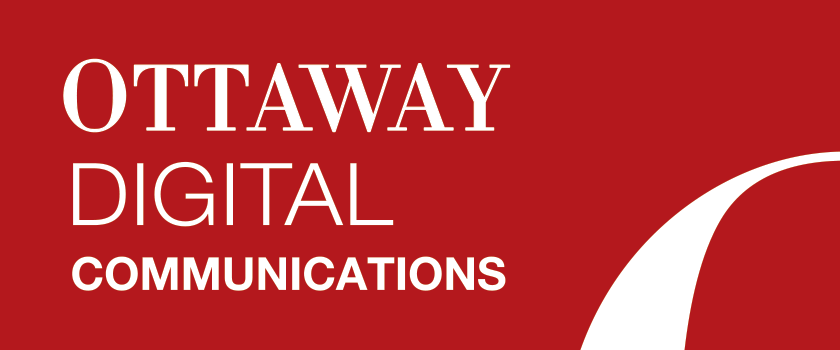
To put it simply, few people in the world, if any, know every single ranking factor at Google, given that the algorithm is updated around six times a day, according to Google’s Documentary. Many notable blogs will tell you Google has over 200 ranking values. According to Shelley Walsh at the Search Engine Journal, “Google and ranking has evolved exponentially over the last 25 years to a point where there are hundreds (maybe thousands) of factors and machine learning overlays.”
The Google algorithm is something Google keeps close to its chest; however, it gives us ‘updates’ on algorithm changes whenever a significant amount of change occurs. These are typically called ‘Core Updates.’ However, in August of 2022, Google rolled out their ‘Helpful Content Update,’ which completely changed how your website ranks. There are still more ‘Helpful Content Updates’ being released by Google; however, Google is now (as of 2024) including all ‘Helpful Content Updates’ in their ‘Core Updates.’
Understanding the Helpful Content Update
As suggested by its name, the Helpful Content Update was designed to reward content that is ‘helpful’ and provides a satisfying experience for website visitors, while ‘unhelpful’ or more sales-focused content that didn’t meet the users’ needs dropped in ranking. This update is part of Google’s ongoing effort to show more original, helpful content created for people in search results.
Key Aspects of Helpful Content
- People-First Content: Google now prioritizes content that demonstrates first-hand expertise and a depth of knowledge. This means content should be created to help users, not just to rank on search engines. “User intent is arguably the most important ranking signal, at least when it comes to signals we can control,” Search Engine Land emphasizes.
- Relevance and Depth: The update favors content that provides substantial, complete, or comprehensive descriptions of the topic. Shallow content or content that leaves readers feeling like they need to search again for more information will typically rank lower, while in-depth, relevant content will rank higher.
- Expertise and Authority: Google is placing more emphasis on content created by genuine experts in their field. This doesn’t necessarily mean formal qualifications but rather demonstrable knowledge and experience in the subject matter.
Understanding E-E-A-T: The Cornerstone of Quality Content
Having worked in SEO since the early 2000s, I’d be remiss to exclude EEAT from this article. E-E-A-T, which stands for Experience, Expertise, Authoritativeness, and Trustworthiness, is a concept that Google uses to evaluate the quality of web content.
Although EEAT isn’t technically a rank factor, it is essential to creating high quality content, which is a ranking factor. According to SEMrush, “E-E-A-T is important for search engine optimization (SEO) because it helps you create quality content that performs well in Google results. (And performs well with users.)
To clarify, E-E-A-T is not a confirmed direct factor in Google’s ranking formula.
But improving your E-E-A-T helps you align with Google’s definition of a good search result.”
Breaking Down E-E-A-T
- Experience: This is the newest addition to the E-E-A-T concept. Google now emphasizes the value of first-hand experience in content creation. For example, a review written by someone who has used a product is considered more valuable than one written without direct experience.
- Expertise: This refers to the creator’s level of knowledge and skill in the subject area. For some topics (like medical advice), formal expertise is crucial. For others (like hobby-related content), extensive personal experience can demonstrate expertise.
- Authoritativeness: This is about the reputation of the brand, company, content creator, website, and the content itself. Authoritativeness can be gauged by factors like professional credentials, citations from other reputable sources, and positive mentions across the web.
- Trustworthiness: This relates to the overall credibility of the website and the content. Factors contributing to trustworthiness include transparency about who’s responsible for the content, secure website protocols (HTTPS), clear policies, and accurate information.
Implementing E-E-A-T in Your Content Strategy
To improve your content’s E-E-A-T signals:
- Showcase Experience: Include personal anecdotes, case studies, or examples demonstrating your hands-on experience with the subject. You can do this by stating the number of years you’ve been in business or the years you have been in the industry.
- Highlight Expertise: Display author bios that outline relevant qualifications, experience, and credentials. Link to portfolios or professional profiles when appropriate.
- Build Authority: Encourage reputable websites to link to your content. Contribute guest posts to respected publications in your field. Engage in thought leadership activities like speaking at conferences or participating in industry events.
- Enhance Trustworthiness: Provide clear contact information, maintain transparency about your company or organization, and include links to privacy policies and terms of service. Update your content regularly to ensure it remains accurate and relevant.
- Cite Reliable Sources: When making claims or presenting data, link to reputable, authoritative sources to support your statements.
By focusing on E-E-A-T principles, you align with Google’s quality standards and create content that genuinely serves your audience’s needs. This approach supports the goals of the Helpful Content Update and can contribute to improved search rankings and user satisfaction.
Impact on SEO Strategies
The Helpful Content Update has significant implications for SEO strategies:
- Quality Over Quantity: Instead of producing large volumes of content targeting various keywords, focus on creating fewer, more comprehensive pieces that thoroughly address user needs.
- User Intent Focus: Understanding and addressing the underlying user intent behind searches has become more crucial than ever. Quality content aims to solve problems or answer questions thoroughly.
- Authenticity and Originality: Avoid rehashing content from other sources. Instead, provide unique insights, perspectives, or information based on genuine expertise or experience.
With the boom of AI, there has been an excessive amount of content produced and put on websites. Most often, this content wasn’t ‘helpful’ because people were producing quantity over quality. It is much better to rank on page one position one for one or two high-volume keywords than it is to rank on page 3 or 4 for 20 different pages.
In the words of Google’s John Mueller, “… it’s easy to forget that a site doesn’t just ‘rank’ on its own, it ranks for what it’s relevant for. No ranking factor compensates missing relevance, or missing user interest.”
Adapting Your Content Strategy
To align with Google’s Helpful Content Update, consider these strategies:
- Audit Existing Content: Review your website’s content and identify pieces that may not meet the “helpful content” criteria. Consider updating, improving, or removing low-quality content.
- Focus on User Experience: Ensure your content is easy to read, well-structured, mobile-friendly, and provides a good user experience. This includes factors like page speed, mobile-friendliness, and clear navigation.
- Demonstrate Expertise: Showcase your knowledge through in-depth articles, case studies, or original research. Include author bios or “About Us” pages highlighting your credentials and experience. Case studies are important because they show the problem your client came to you with and what solution you provided. This is helpful to perspective customers as it gives them valuable information they can use to decide what company to choose.
By focusing on creating truly helpful, user-centric content, you can align your website with Google’s goals and potentially improve your rankings in the process.
Wrapping It Up: What Does This Mean For You?
So, what’s the bottom line with all this Google algorithm talk? It’s pretty simple: create content people actually want to read that answers their search queries.
Because of the Helpful Content Update, SEO doesn’t include keyword stuffing and churning out endless fluff pieces anymore. Now, quality, helpful content that meets your users’ needs is one of the most important ranking factors. Google is getting smarter and wants to see content that genuinely helps people and meets their needs. The Helpful Content Update and E-E-A-T principles are just fancy ways of saying: “Know your stuff, show your stuff, and be real about it.”
Here’s what you need to remember:
- Put your audience first, always
- Share your real experiences and expertise
- Build trust – be the go-to source in your niche
- Keep your content fresh and relevant
At the end of the day, good SEO is just good content. Focus on helping your readers, and you’ll be on the right track, no matter what curveball Google throws next.
So, are you ready to create killer content that your readers will love? Grab your notes and get to work!



